Design decisions for buildings and communities are critical to efforts to increase local and regional resiliency. Building designers — of residential, institutional, and commercial structures — should strive to incorporate passive and active survivability concepts into new and renovated structures.
Community planners and developers need to incorporate concepts that increase the capacity to maintain transportation flow, strategies to handle water management, and infrastructure approaches that will withstand a variety of risks.

A New Business Paradigm to Address Climate Change
This article is about how climate change will affect the business community and businesses should evolve to be climate stewards.
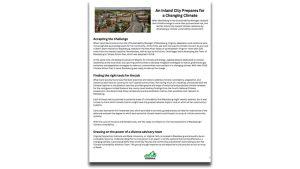
An Inland City Prepares for a Changing Climate
When Blacksburg’s new Sustainability Manager realized that climate change is more than just sea level rise, she led her inland city toward climate resilience by developing a climate vulnerability assessment.
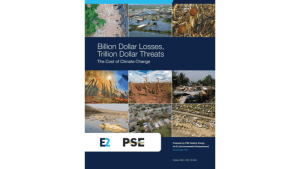
Billion Dollar Losses, Trillion Dollar Threats: The Cost of Climate Change
This report reviews the rising toll of billion-dollar disasters over the last forty years and provides insight into how these disasters are compounded by other extreme weather events.
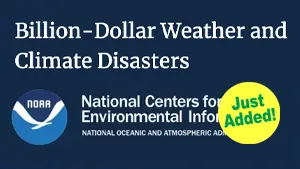
Billion-Dollar Weather and Climate Disasters
The National Centers for Environmental Information’s (NCEI) Billion-Dollar Disasters product is intended to show the impact of extreme weather and climate events on the economy in inflation-adjusted dollars.
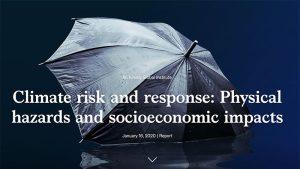
Climate Risk and Response: Physical Hazards and Socioeconomic Impacts
This report focuses on understanding the nature and extent of physical risk from a changing climate over the next one to three decades, exploring physical risk as it is the basis of both transition and liability risks.
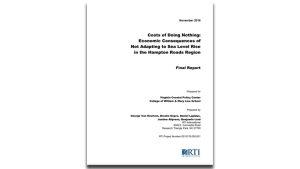
Costs of Doing Nothing: Economic Consequences of Not Adapting to Sea Level Rise in the Hampton Roads Region
Recent studies have pointed out the economic costs of rising temperatures, increased sea levels, and extreme weather events — all factors associated with climate change impact in the Southeast United States. Costs of Doing Nothing: Economic Consequences of Not Adapting to Sea Level Rise in the Hampton Roads Region narrows down the data to the Hampton Roads area. This report looks at several scenarios for sea level rise and the economic consequences.
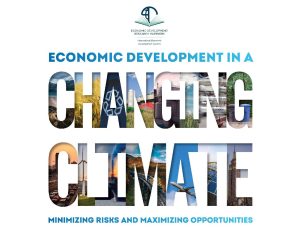
Economic Development in a Changing Climate: Minimizing Risks and Maximizing Opportunities
This report from the International Economic Development Council introduces the topic of climate change and its impact on economic development.
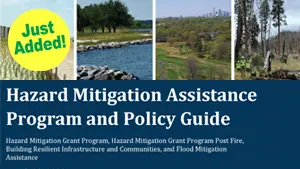
Hazard Mitigation Grant Program (HMGP)
FEMA’s Hazard Mitigation Grant Program provides funding to state, local, tribal and territorial governments so they can develop hazard mitigation plans and rebuild in a way that reduces, or mitigates, future disaster losses in their communities.
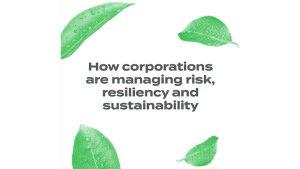
How Corporations are Managing Risk, Resiliency and Sustainability Report
Using information from surveys with business and energy leaders, this report explains how risk management and sustainability efforts converge.
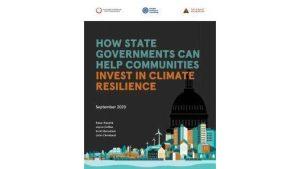
How State Governments Can Help Communities Invest in Climate Resilience
Helping local communities build climate resilience can reap huge rewards for state governments.

A New Business Paradigm to Address Climate Change
This article is about how climate change will affect the business community and businesses should evolve to be climate stewards.

An Inland City Prepares for a Changing Climate
When Blacksburg’s new Sustainability Manager realized that climate change is more than just sea level rise, she led her inland city toward climate resilience by developing a climate vulnerability assessment.

Billion Dollar Losses, Trillion Dollar Threats: The Cost of Climate Change
This report reviews the rising toll of billion-dollar disasters over the last forty years and provides insight into how these disasters are compounded by other extreme weather events.

Billion-Dollar Weather and Climate Disasters
The National Centers for Environmental Information’s (NCEI) Billion-Dollar Disasters product is intended to show the impact of extreme weather and climate events on the economy in inflation-adjusted dollars.

Climate Risk and Response: Physical Hazards and Socioeconomic Impacts
This report focuses on understanding the nature and extent of physical risk from a changing climate over the next one to three decades, exploring physical risk as it is the basis of both transition and liability risks.

Costs of Doing Nothing: Economic Consequences of Not Adapting to Sea Level Rise in the Hampton Roads Region
Recent studies have pointed out the economic costs of rising temperatures, increased sea levels, and extreme weather events — all factors associated with climate change impact in the Southeast United States. Costs of Doing Nothing: Economic Consequences of Not Adapting to Sea Level Rise in the Hampton Roads Region narrows down the data to the Hampton Roads area. This report looks at several scenarios for sea level rise and the economic consequences.

Economic Development in a Changing Climate: Minimizing Risks and Maximizing Opportunities
This report from the International Economic Development Council introduces the topic of climate change and its impact on economic development.

Hazard Mitigation Grant Program (HMGP)
FEMA’s Hazard Mitigation Grant Program provides funding to state, local, tribal and territorial governments so they can develop hazard mitigation plans and rebuild in a way that reduces, or mitigates, future disaster losses in their communities.

How Corporations are Managing Risk, Resiliency and Sustainability Report
Using information from surveys with business and energy leaders, this report explains how risk management and sustainability efforts converge.

How State Governments Can Help Communities Invest in Climate Resilience
Helping local communities build climate resilience can reap huge rewards for state governments.
